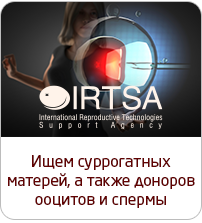The real breakthrough in oncology and reproductive medicine
For the first time in Russia recorded case of becoming pregnant in a patient after treatment with high-dose cancer chemotherapy (Hodgkin's lymphoma).
Known that pregnancy occurred through the use of cryopreservation technology (freezing) and ovarian tissue transplantation.
Previously, such patients were doomed to sterility due to aggressive effects of chemotherapy, which destroys the egg and ovarian tissue. As a result of irreversible damage to ovarian function is completely lost. With the development of assisted reproductive technologies it become possible preservation of eggs, ovarian tissue and fertility of cancer patients.
Before performing anticancer therapy (high-dose chemotherapy), ovary of the patient was withdrawn for cryopreservation. This procedure will protect it from damage during medical treatment. Upon successful completion of the treatment with oncologist permission ovarian tissue was defrosted and transplanted back to the patient, which further allowed to reach long-awaited pregnancy through IVF procedure.
Using method of cryopreservation of primordial follicles in ovarian tissue led to a breakthrough in two important areas such as oncology and reproductive medicine. With this technology, fertility preservation now can protect, preserve and restore reproductive function, hormonal balance and help to achieve a pregnancy after devastating effects of anticancer therapy.
Based on: www.probirka.org
- The central office of IRTSA Ukraine completely restores work
- How we work during the COVID-19 pandemic
- 1st International Congress on Reproductive Law
- Soon Americans may face a new ethical dilemma
- ‘Friends’ star Jennifer Aniston is pregnant with twins
- Image processing technology can impact the success rates of ivf
- Editing genes of human embryos can became the next big thing in genetics
- Supermodel Tyra Banks undergoes IVF
- Scientists discovered a new, safer way for egg freezing
- French scientists have managed to grow human sperm cells in vitro









